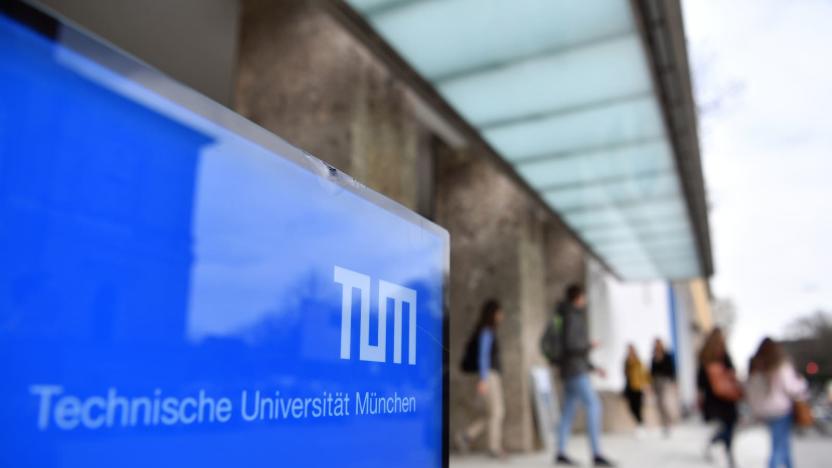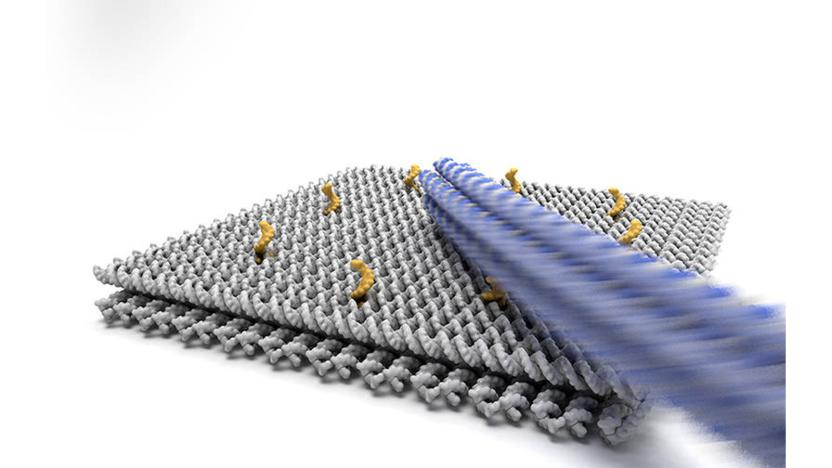TechnicalUniversityOfMunich
Latest

Facebook backs an independent AI ethics research center
Facebook is just as interested as its peers in fostering ethical AI. The social network has teamed up with the Technical University of Munich to back the formation of an independent AI ethics research center. The plainly titled Institute for Ethics in Artificial Intelligence will wield the university' academic resources to explore issues that "industry alone cannot answer," including those in areas like fairness, privacy, safety and transparency.

Speedy DNA nanorobot could lead to molecular factories
DNA-based robots promise all kinds of microscopic machinery, but there's a major obstacle: they're slow. Existing designs that use biochemical processes for movement can take hours to shuffle molecules around, which makes them utterly impractical for anything time sensitive. That might not a hurdle for much longer. Scientists have developed a DNA nanorobot (specifically, an arm) that uses electric fields to move a whopping 100,000 times faster than previous examples, even though it's based on straightforward concepts.

Electric car prototype is built for Africa's rural roads
With a few exceptions, most electric cars are delicate, expensive creatures designed for paved streets and well-heeled early adopters. And that makes them ill-suited to rural Africa -- many roads away from the cities aren't paved at all, and just about any EV would be out of reach. That's where the Technical University of Munich comes into play. It recently revealed a prototype electric vehicle, the aCar, that's designed for both the conditions and uses of rural Africa.

3D imaging reveals secret fibers that connect tendons to bone
The Achilles tendon is a powerful body part connecting calf muscle to heel bone, enabling springing leaps and hurdles that make sports stars seem superhuman. But exactly how it connects to the bone hasn't been fully understood -- until now. Researchers from multiple disciplines took a microscopic look and found an extremely thin tissue layer that enables the tendon's great expansive strength.

Terabit fiber optic speeds just came closer to reality
Sure, researchers have been showing off terabit data speeds in fiber optics for years, but they've seldom been practical. That exotic technology may work over long distances, but it can quickly fall apart when you throw typical network loads in the mix. However, it's about to become much more practical. Nokia Bell Labs, Deutsche Telekom and the Technical University of Munich have shown off 1Tbps data speeds in a field trial that involved "real conditions," with varying channel conditions and traffic levels.

A supernova once blasted the moon with radioactive iron
Stars are gigantic hydrogen bombs that normally produce helium with little fuss. When the hydrogen is all gone, however, they implode, causing exotic new elements to be formed by the massive gravitational pressure. If a star is just the right size (eight to 15 times our sun's mass), it will go supernova, ejecting heavy, often unique isotopes into space. Researchers have found some of those isotopes on the moon, meaning that our solar system was once hit by dust from a supernova just a few hundred light years away.

Robots finally able to follow 'make me a sandwich' command (video)
Pancakes? No problem. Cookies? You got it! Sandwich? ...is there a Subway near by? Why robots have such a hard time slapping meat and cheese on bread is beyond us, but we're glad the crack team at the Technical University of Munich has finally figured out how to teach them. The dynamic duo of James and Rosie don't exactly blaze through their task of making a sandwich and some popcorn, but at least they're nice enough to toast the bread for your salami- and cheese-based chow. As usual, the moves here are not preprogrammed, the two bots make decisions on the fly based on a complex "reasoning" mechanism and data it can cull from a Kinect. Check out the videos below to watch two carefully construct a simple, layered lunch.

Magic Mirror Kinect hack puts an x-ray spin on augmented reality
That's right -- not even CES can stop the endless wave of Kinect hacks. The latest, and one of the more impressive to date, is the so-called "Magic Mirror" developed by Tobias Blum from the Technical University of Munich, which bridges augmented reality with x-ray vision (of sorts). Of course, the "of sorts" is that it doesn't actually peer through your body to reveal your skeleton (yet), but instead maps a random skeleton from a CT scan onto your frame to create a real-time freakout. As with most Kinect hacks, this one is best seen on video -- check it out after the break.

Speedy robo-cam mimics the movements of the human eye, exceeds them
Some researchers at the Technical University of Munich have built an unassuming but no-less-remarkable mechanism for tilting and panning a small camera robotically. Designed to keep up with the eye movements of a human in gaze-tracking studies, the camera mount features three degrees of movement, and can flick around at a rapid 2500 degrees per second -- our flesh-composed eyeballs max out at a mere 1000. The setup uses ultrasonic piezo-actuators, which move prismatic joints, which drive spherically-jointed rods attached to the camera, keeping the weight under 100 grams and still acting gently enough to avoid rattling on top of the wearer's head. We'll take two.

ROS: a common OS to streamline robotic engineering
The biannual International Joint Conference on Artificial Intelligence has this year shed light on a new effort to standardize robot instructions around a common platform, so that designers won't have to "reinvent the wheel over and over" with every project. Presently, robot design is undertaken in an ad hoc fashion, with both hardware and software being built from scratch, but teams at Stanford, MIT and the Technical University of Munich are hoping to change that with the Robot Operating System, or ROS. This new OS would have to compete with Microsoft's robotics offering, but the general enthusiasm for it at the conference suggests a bright future, with some brave souls even envisioning a robot app store somewhere down the line. Video after the break.

ACE robot asks for directions, purpose in life
The Tweenbots project already demonstrated that at least some folks are willing to help a lost robot find its way, but this new ACE bot developed by researchers at the Technical University of Munich has now ramped things up in a fairly big way, with it actually asking passers-by for directions and developing a map as it moves through the city. Apparently, the robot uses a series of cameras to detect people nearby, and it then asks them to simply point towards the destination indicated on its screen, which it is able to recognize, although it does also asks them to confirm the direction on the screen just to be safe. In initial tests, that appears to have been relatively successful, with ACE (or Autonomous City Explorer) able to reach its destination 1.5 kilometers away in five hours after relying on directions from 38 people. But don't take our word for it. Head on past the break to check out its people skills for yourself.[Via Coolest Gadgets]

BMW devises smart car door that senses danger
BMW has already clearly shown that it wants to make its cars as smart as possible, and it looks like that extends right down to the doors, which have now been smartened up with a little help from the Technical University of Munich. According to New Scientist, the pair have developed a prototype door that uses a range of sensors to detect any oncoming dangers, and work in concert with an accelerometer in the door to prevent it from being opened. What's more, the sensors are apparently also able to detect the proximity of the object and adjust the resistance of the door accordingly -- for instance, slowing the door down if you're about to slam it into a lamp post. The current prototype does apparently have a bit of a problem when it comes to field of view, however, although BMW says that can be remedied with some added cameras in future versions, which could possibly be in actual cars in as little as a year -- though it's quick to point out that it hasn't made a final decision just yet.[Via Crave]

Europeans working on anti-hijacking software
Even though air travel has gotten marginally safer since the tragedies of 9/11 -- thanks in part to fortified cockpits, increased air marshal presence, and a ban on toenail clippers -- it still doesn't seem impossible for a group of determined individuals to hijack a plane and turn it into a deadly missile. And should such a suicide-style attack happen again, the only surefire way of protecting targets on the ground would seem to be shooting the plane out of the air -- a nightmare scenario that no one wants to see. Well, soon airlines may have another, much safer option at their disposal in the form of a software platform being developed by a consortium of 30-odd European businesses and research institutes that would make an aircraft's systems completely unusable in the event of a cockpit breach -- control of the plane would be passed to officials on the ground -- even if one of the hijackers was among the 1337est of hackers. The $45 million program is being spearheaded by Airbus (already big fans of auto-pilot), Siemens, and the Technical University of Munich, with the first results of the collaboration scheduled to be revealed at an October conference in the UK. Here's to hoping that the group comes up with a working solution sooner rather than later, because this is one technology that just can't be deployed quickly enough.





